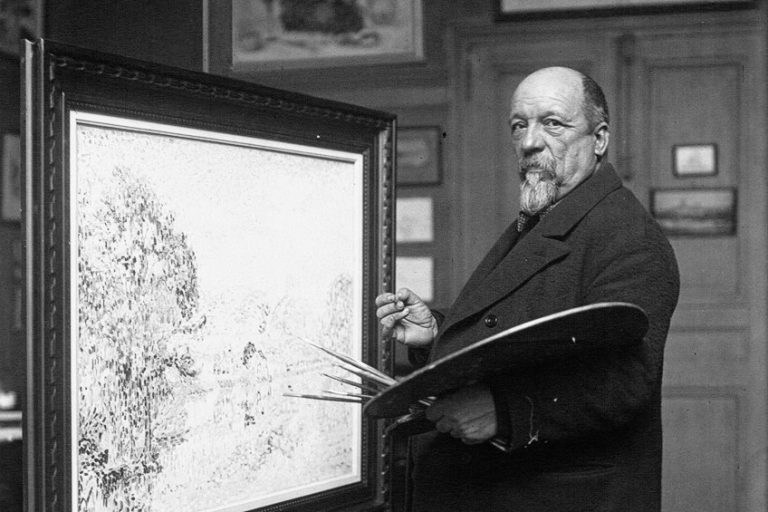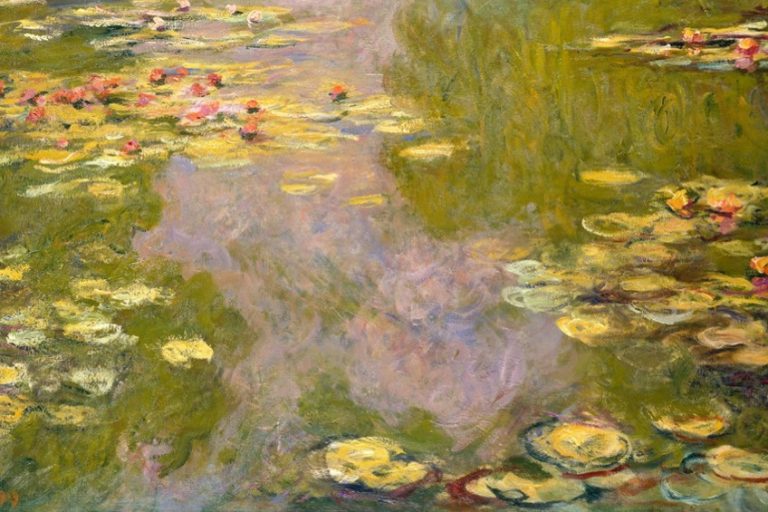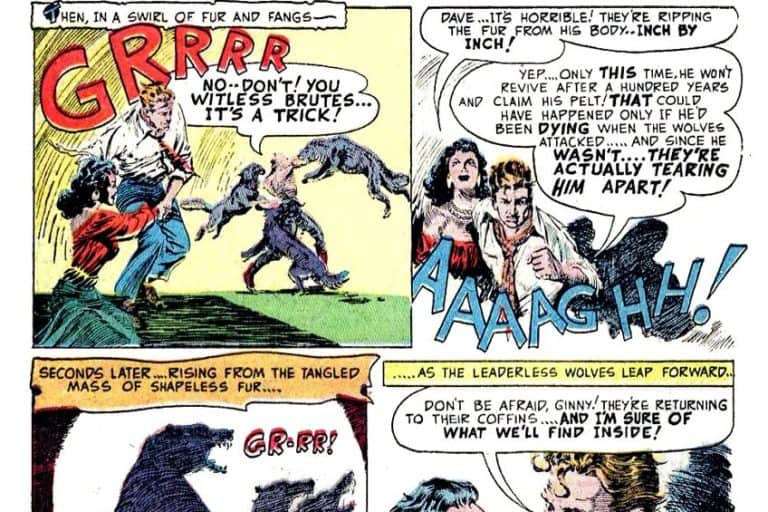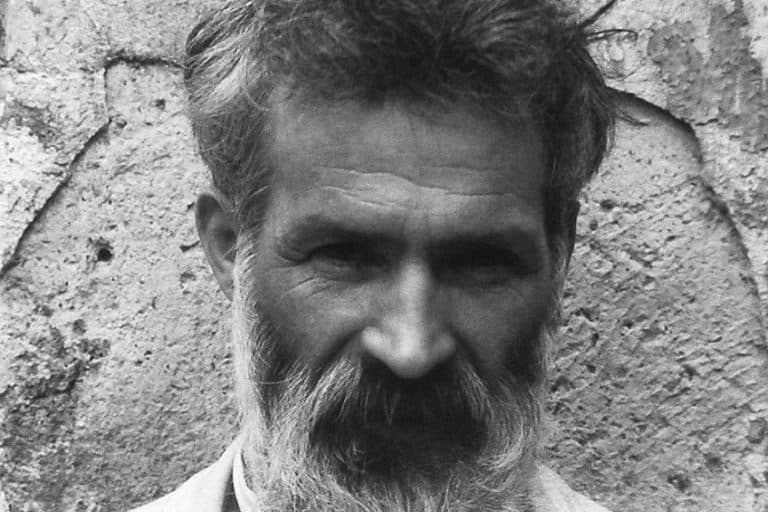Bisa Butler – An In-Depth and Informative Bisa Butler Biography
Bisa Butler: the artist whose life-size vibrant portraits transformed the medium of quilting. With her intricate and transfixing portraits, she is stitching a new narrative of African American history. This article explores the significance of her work and is sure to leave you feeling inspired, with a renewed technicolor vision of the world!
Artist in Context: Who Is Bisa Butler?
Bisa Butler is a New Jersey-born fiber artist who currently lives and works in Brooklyn, New York. Her bold use of color and textile in her unique portraits, makes her work instantly recognizable as Bisa Butler quilts. She uses fabric and stitching in the way a painter explores the mixing and use of different colors and paints.
She describes her work as a “quilted photo album” that resembles a “Black diaspora family”.
The people in her work that she recreates in technicolor, range from well-known figures to ordinary people who are often overlooked. Many of her references are based on archival photographs, often in sepia or grayscale. Through her powerful meticulous work, she embeds these figures with colors of beauty and dignity, and in the process, she pulls them out of the past and into life again.
| Date of Birth | 1973 |
| Country of Birth | Orange, New Jersey, USA |
| Art Movements | Fiber Art |
| Genre / Style | Portraiture, AfriCobra |
| Mediums Used | Textiles, quilting, sewing |
| Dominant Themes | Portraiture |
Bisa Butler’s Biography
Bisa Butler has been making quilted artworks since the 1990s, but it is only in her mid 40’s that she started receiving critical acclaim for her work. Since then, Bisa Butler’s biography has started to grow at a surprising rate. The subheadings below detail some of the important events and influences that shaped Butler’s successful career.
Early Life
Bisa Butler was born in 1973 in Orange, New Jersey. Butler grew up in a household with an interesting cultural influence. Her mother influenced her as an African American French teacher, and her father as a Ghanaian college president. Butler is the youngest child of four and since preschool, she thoroughly enjoyed art.
Education and Inspiration
Bisa attended Columbia High School and graduated in 1991. Hereafter, she attended Howard University and graduated with a Cum Laude in Fine Arts. Butler was highly influenced by the lectures she received at the university by acclaimed Black artists, such as Lois Mailou Jones. Her education at Howard University played a massive role in shaping Butler’s view of the world and her approach to her art. She was largely influenced by her lecturers, including Ernie Barnes, Elizabeth Catlett, and Jeff Donaldson.
Jeff Donaldson especially had a big influence on her work. He was the Dean of Fine Arts and one of the founders of AfriCobra. AfriCobra (African Commune of Bad Relevant Artists) is an African American artists collective founded in 1968.
The philosophy of the collective was to express a Black aesthetic in their art that was rooted in community effort and positive revolutionary ideas. As the dean, Donaldson managed to use his AfriCobra manifesto to influence the mission of the university. Part of this mission was to instill within African American students the responsibility to educate their people and to always show their people in a positive light.
This is something that has stayed with Butler ever since and that still directs her work.
In 2004, Butler received her master’s degree in art education from Montclair State University. Whilst her undergraduate degree was focused on painting, her master’s degree focused on fiber art. This, along with watching her mother and grandmother sew as a child, is what ultimately inspired her choice to use quilting as her artistic medium. She also made her first portrait quilt during her master’s degree, titled Francis and Violette (Grandparents). Another reason she chose quilting, is because she wanted to protect her daughter from the toxic fumes that are sometimes present with painting.
From Art Teacher to Artist
After completing her master’s degree, Butler taught high school art at Newark Public School for over a decade. During this period, she continued to make quilts and clothing after work hours. She explained that teaching kids brought her a lot of joy and their enthusiasm inspired her. It is during this time that she started creating quilts of children, including her seminal The Safety Patrol (2018) and South Side, Sunday Morning (2018).
Facets of Bisa Butler’s Work
There are several important things when discussing the works of Bisa Butler. Among these are the process that she uses to create the work, the relevance of quilting as a medium, and her symbolic use of fabric and color.
Bisa Butler’s Process
Bisa Butler’s process starts with the sourcing of archival photographs. At first, Butler only used black and white photographs of her family, but she soon realized that she would eventually run out of source material. She decided to use a database that kept archival images from the Depression era, which she accessed freely through the Farm Security Administration in the National Archives.
These photos were not under copyright and provided her with thousands of images of unnamed people captured in the history books, stripped from their identity. She enjoys using black and white photos, as it gives her the freedom to use color to restore these people’s identities.
After choosing a photograph as a reference, she enlarges the image to life-size. Hereafter, she starts to draw over the images, isolating different shaded areas into shapes. Next, she chooses different fabrics to be layered upon these drawn shapes. She uses a long arm sewing machine to stitch these patches together, which is a process called appliqué.
Nearing the end, she layers the patched fabrics onto a soft batting and a single sheet of fabric as a backing. She then stitches all three layers together, using the thread as an added layer of details throughout the work.
One of her quilts takes about two hundred hours to complete.
The Relevance of Quilting
Bisa Butler comes from a family where quilting has become a tradition. Both Bisa’s mother and grandmother were skilled in sewing, and they taught Butler this skill from childhood. Historically, enslaved women working in wealthier households were taught the skills of quilting, sewing, spinning, and weaving. These skills became something the woman used daily, and they passed this knowledge down to their children.
Whilst Butler stays true to this traditional quilting method, she also takes it a step further by adding portraiture into her works.
Butler is amongst a group of Black artists, including Amy Sherald and Kehinde Wiley, to use portraiture in their work – something that was historically only used for European nobility. Butler uses this history and tradition to portray a new version of contemporary Black identity.
Bisa Butler’s Use of Symbolism
The photographs Butler uses often don’t have a lot of information with them, and sometimes only give a date and location. To fill in the blanks, Butler does research into what happened during this period at these places. By getting some context into the image, Butler then uses color and texture to recreate the photographs in a way that restores some of this person’s lost identity. The symbolism in her use of color and fabric gives the viewer context into the life of the person.
The Symbolism of Color
Color can convey a lot about a feeling. Blue tones might symbolize peace or calmness. Purple can symbolize sadness or complexity. Yellow might refer to happiness or youth, whereas green might resemble growth. Red is more powerful, strong, and demanding. Butler argues that she would often use red fabrics in the faces of people who are powerful leaders.
She often uses strong jewel-toned colors for skin tones, referencing the AfriCobra’s use of “Kool-Aid” colors. The Kool-Aid colors are based on the vibrant color palette of African American fashion of the 1960s and 1970s.
The Symbolism of Fabric
As an influence from her Ghanaian father, Butler also uses West African wax print textiles to show that the figures are of African descent and that they have a long and rich historical background. Butler’s fabric choices are thus just as important as her use of color. She also often uses shiny or velvety fabrics to portray Black women’s hair. In her work Anaya with oranges (2017), she used a fabric with black flower patterns for the little girl’s pretty pigtail hairstyle.
Seminal Works of Bisa Butler
The following list contains some of the most important Bisa Butler quilts. These works will be analyzed in more depth in the subheadings to follow.
- The Safety Patrol (2018)
- Southside Sunday Morning (2018)
- I Know Why the Caged Bird Sings (2019)
- I Am Not Your Negro (2019)
The Safety Patrol (2018)
| Artwork Title | The Safety Patrol |
| Date | 2018 |
| Medium | Quilted and appliquéd cotton, wool, and chiffon. |
| Size | 210.8 x 229 cm |
| Collection | Cavigga Family Trust Fund |
The Safety Patrol (2018) was one of the works on show in Butler’s first solo museum exhibition in New York. This work is a quilted version of the 1947 photo taken by African American photographer Charles “Teenie” Harris. Butler made this work during her final year of teaching, and she said that she felt as if the seven children in the photograph were calling out to her.
The work is life-size, full of dazzling colors and vibrant hues.
The boy in the center of the composition seems like the leader of the group. He is wearing a Nigerian batik printed shirt and is keeping the other six boys from crossing the street. The leading boy is looking down at the viewer, and his authority is made clearer through the officer-styled cap he is wearing.
The red colors used for his face further assert that he is the leader.
The boy is a reassuring figure thus acts as a kind of safety patrol officer, guiding the group as to when it is safe to cross the road. Butler says that part of the importance of the work for her was that it gave her the sensation that the kids that she is teaching, and would soon leave, will be fine.
Southside Sunday Morning (2018)
| Artwork Title | Southside Sunday Morning |
| Date | 2018 |
| Medium | Silk and Cotton, quilted. |
| Size | 185.4 x 276.8 cm |
| Collection | Private Collection |
Butler’s work, Southside Sunday Morning (2018), is her version of the iconic photograph, Negro Boys on Easter Morning (1941), by Russell Lee. The image shows five boys, dressed in formalwear, sitting on the hood of a car on the South Side of Chicago. Butler, however, removed the car in her quilted version of the photograph. When looking at the original photograph, the boy in the front’s foot is resting on the car’s number plate and Butler was struck by how clean and shiny his shoes were.
This was an important detail to her, as it communicated something of a community caring for each other and taking pride in each other. In an interview, she says that the work spoke to her about how her community loves children.
I Know Why the Caged Bird Sings (2019)
| Artwork Title | I Know Why the Caged Bird Sings |
| Date | 2019 |
| Medium | Cotton, Silk, Wool, Velvet, and Thread |
| Size | 127 x 327.6 cm |
| Collection | Minneapolis Museum of Art |
This massive work by Butler, called I Know Why the Caged Bird Sings (2019), is titled after a poem by Maya Angelou. In her poem, Angelou wrote “[The] caged bird sings of freedom” and throughout the work, Butler used symbols of birds in flight. The symbol of the bird in flight is a reference to the first generation of Black women that were allowed to pursue higher education in America.
The work is based on a 19th-century photo of four Black women.
These women were all college students, and they were sitting on a bench at Atlanta University. The woman on the left of the image is wearing a hat made from a Vlisco patterned fabric called “Speed Bird”. The bird in the pattern represents prosperity, transformation, and freedom. The shirt of the woman second from the right is also made from a Vlisco pattern and shows an image of a bird leaving its cage.
The fabric used for the skirt of the woman on the far right also has cultural significance. This fabric is called “Michelle’s Shoes” and it is a fabric used in West and Central Africa when certain events are celebrated. Butler explains the fabric was printed in 2009 when the Obama family had visited Ghana. People loved Michelle Obama’s style so much that they made two prints inspired by her, namely “Michelle Obama’s Shoes” and “Michelle Obama’s Bag”.
With this reference, Butler is connecting these women, who were the first to attend university, to Michelle Obama, the first Black first lady of America.
I Am Not Your Negro (2019)
| Artwork Title | I Am Not Your Negro |
| Date | 2019 |
| Medium | Cotton, wool, and chiffon, quilted and appliquéd |
| Size | 200 x 152,5 cm |
| Collection | Private collection |
This work is inspired by a famous image taken by Dorothea Lange in Alabama. Lange was commissioned to take the image by the Farm Security Administration in 1936. The image shows an unnamed African American man, looking directly at the camera and appearing to be deep in thought. He is holding his hat in one hand, legs crossed, and his other hand is resting on his lips.
Butler used this image to recreate this unnamed man on a life-size scale as if he is still living today.
She dressed him in bright colors, full of patterns. One of these patterns included airplanes, suggesting that he has traveled the world. Naturally, this man’s travels to get him to America had not been via plane and most likely not by his own choice.
However, in this work, Butler is giving a new autonomy and identity. She imagines him as a thinking individual, like a writer or philosopher, who travels the world and shares his deepest thoughts. The title of the work, I Am Not Your Negro, is taken from the 2016 documentary film with the same title. The documentary explores the life of the author James Baldwin and addresses racism in America.
With this title, Butler gives this man his identity back, by saying that he is not inferior to anyone and that he does not belong to anyone.
Important Events in Butler’s Career
There have been many Bisa Butler exhibitions since the onset of her fame. Butler held her first solo exhibition in 2020 at the Katonah Museum in New York. After this, her career would skyrocket. About a year after her debut exhibition, Butler’s first work went on a secondary market auction and sold for $75,000, which is more than seven times higher than what the estimated selling price was. This work was her 2007 quilt titled Nandi and Natalie (Friends).
Her first solo show was so well received, that within a year the exhibition traveled to the Art Institute of Chicago, where Bisa Butler’s first body of work was exhibited for a second time.
After this, Bisa Butler quilts were used as the cover image of multiple high-profile publications, including Time magazine’s annual “Person of the Year” publication in 2020 and Essence magazine’s May/June 2021 publication. In 2021, Bisa Butler’s artwork of Tarana Burke, founder of the “me too” movement, was published as the cover of Tarana Burke’s biography, titled Unbound (2021). That same year, Butler was invited to appear in the Oprah Winfrey Network’s “Juneteenth Artist Showcase” in collaboration with the gallery that now represents her, the Claire Oliver Gallery.
The artist’s work is now housed in many prestigious collections, including collections in the Minneapolis Institute of Art, the Nelson-Atkins Museum of Art, the Newark Museum of Art, the Toledo Museum of Art, the Orlando Museum of Art, and the Museum of Fine Arts, Boston.
Book Recommendations
This article introduced only a few of Bisa Butler’s artworks and some aspects of what influenced her in making these works. There is, however, much more to be learned about Bisa Butler! If you are interested in reading more about the vibrant works of Bisa Butler, we recommend these books:
Bisa Butler: Portraits (2020) By Erica Warren
This book situates Bisa Butler’s artworks within the broader historical context of textile art and photography. It also offers an in-depth exploration of the works of Butler as a contemporary artist. This book is sure to offer beautiful color prints of the many amazing Bisa Butler quilts!
- A beautifully illustrated look at the works of Bisa Butler
- An in-depth exploration of one of America's most innovative artists
- Introduces Butler's work and sets up a basis for future research
Unbound: My Story of Liberation and the Birth of the Me Too Movement (2021) by Tarana Burke
This book is not about Bisa Butler, but her artwork is used for the cover of this important biography of Tarana Burke. Burke is the founder and activist of the #MeToo movement, which is arguably one of the largest and most important cultural movements in American history.
- From the founder and activist of the #MeToo movement
- A powerful memoir about the author's own "Me Too" journey
- A story of an inimitable woman's inner strength and perseverance
Bisa Butler’s art came from a long history of traditional African American quilting and sewing. These are artistic mediums that are typically considered to be merely a craft, but Butler, through her exquisite renditions of Black identity, has managed to shift the world’s perspective on this age-old technique. Butler reimagined the past of her people and instilled it with pride, dignity, and joy, all the while turning her family’s craft into contemporary fine art.
Frequently Asked Questions
What Gallery Represents Bisa Butler?
There have been many Bisa Butler exhibitions, including a solo show of Bisa Butler at the Art Institute of Chicago, but not all were with the gallery that represents her. Bisa Butler is currently represented by Claire Oliver Gallery in Harlem.
Why Is Bisa Butler’s Work So Large?
Butler chooses to make her figures life-size so that they can be the same size as the viewers. This is to show that the figures in the work are equal to those who view them.
What Is Bisa Butler’s Work About?
Bisa Butler’s work is about Black identity and aims at challenging racial stereotypes. In an interview, she said that her work proclaims that Black people should be seen, regarded, and treated as equals.
Chrisél Attewell (b. 1994) is a multidisciplinary artist from South Africa. Her work is research-driven and experimental. Inspired by current socio-ecological concerns, Attewell’s work explores the nuances in people’s connection to the Earth, to other species, and to each other. She works with various mediums, including installation, sculpture, photography, and painting, and prefers natural materials, such as hemp canvas, oil paint, glass, clay, and stone.
She received her BAFA (Fine Arts, Cum Laude) from the University of Pretoria in 2016 and is currently pursuing her MA in Visual Arts at the University of Johannesburg. Her work has been represented locally and internationally in numerous exhibitions, residencies, and art fairs. Attewell was selected as a Sasol New Signatures finalist (2016, 2017) and a Top 100 finalist for the ABSA L’Atelier (2018). Attewell was selected as a 2018 recipient of the Young Female Residency Award, founded by Benon Lutaaya.
Her work was showcased at the 2019 and 2022 Contemporary Istanbul with Berman Contemporary and her latest solo exhibition, titled Sociogenesis: Resilience under Fire, curated by Els van Mourik, was exhibited in 2020 at Berman Contemporary in Johannesburg. Attewell also exhibited at the main section of the 2022 Investec Cape Town Art Fair.
Learn more about Chrisél Attwell and the Art in Context Team.
Cite this Article
Chrisél, Attewell, “Bisa Butler – An In-Depth and Informative Bisa Butler Biography.” Art in Context. March 31, 2022. URL: https://artincontext.org/bisa-butler/
Attewell, C. (2022, 31 March). Bisa Butler – An In-Depth and Informative Bisa Butler Biography. Art in Context. https://artincontext.org/bisa-butler/
Attewell, Chrisél. “Bisa Butler – An In-Depth and Informative Bisa Butler Biography.” Art in Context, March 31, 2022. https://artincontext.org/bisa-butler/.













